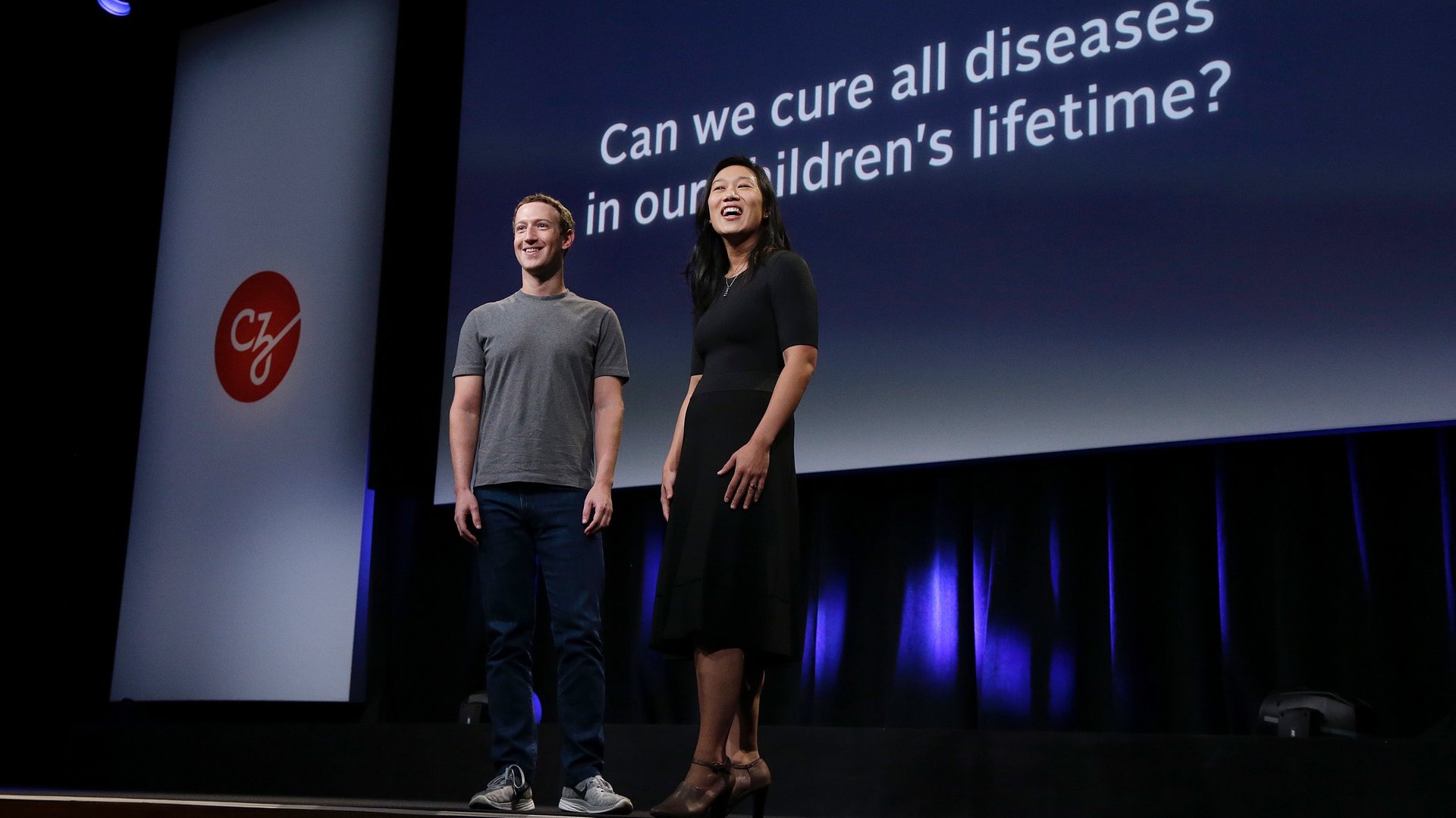Mark Zuckerberg thinks he can disrupt how we cure disease with $3 billion
Mark Zuckerberg is launching the first phase of his attempt to cure all disease during his infant daughter’s lifetime: a $3 billion funding pledge, spread out over the next decade.


Mark Zuckerberg is launching the first phase of his attempt to cure all disease during his infant daughter’s lifetime: a $3 billion funding pledge, spread out over the next decade.
The Facebook CEO and his wife, Priscilla Chan, pledged the money as the next big investment by their philanthropic company, the Chan Zuckerberg Initiative, which is also focused on education, poverty, and equality. The first wave of cash will be a $600 million investment in a new initiative called Biohub, a team from Stanford, Berkeley, and the University of California, San Francisco, tasked with finding new ways to fight disease.
The 10-year pledge of financial support and the focus on technology are what makes this effort different for Zuckerberg. In his mind, the Biohub would be a “virtual institute,” in which scientists can learn from each other through newly-created forms of communication for findings. It will also serve as a place where scientists can pitch their ideas that wouldn’t otherwise be funded by academia or government grants, according to co-leaders of the Biohub, UCSF’s Joe DeRisi and Stanford’s Stephen Quake.
“Typically, a scientific grant is a few hundred thousand dollars,” Zuckerberg said in a presentation announcing the funding. “Tools often take large groups of scientists and engineers working together over a long period of time.”
CZI also named Dr. Cori Bargmann, a professor at the Rockefeller University and investigator at the Howard Hughes Medical Institute, as the head of its science-funding branch.
The broader goal, established by Zuckerberg in an open letter to his daughter in late 2015 when CZI was formed, is to cure all disease by the end of the century. Chan and Zuckerberg set aside an estimated $45 billion for the initiative.
“As a pediatrician I’ve worked with families … making devastating diagnosis of leukemia and sharing with families that we are unable to resuscitate their child.” Chan said in the presentation. “By investing in science today, we hope to build a future in which all of our children can live long and rewarding lives.”
The CZI contribution to cure all disease, while ambitious, is easily dwarfed by the more than $30 billion the US federal government spends each year to achieve the same goal. For further context, the National Cancer Institute received more than $5 billion from the National Institutes of Health in 2016.
Herein lies Zuckerberg and Chan’s bet, and the inherent ethos of Silicon Valley: tech is exponentially more efficient than government. It’s a bold move and a recipe for disappointment to say you’re going to cure all diseases, armed only with $45 billion and a penchant for engineering.
This contribution from CZI would be less than what Facebook spends on research and development in a year. That doesn’t necessarily come out of Zuckerberg’s pocket, but can serve as a benchmark for how much money is required to move the needle in modern tech research.
Also consider that the Gates Foundation has spent $36.7 billion in smaller, targeted grants, hoping to achieve similar goals. In a show of support, Bill Gates joined Zuckerberg on stage for today’s announcement, which was made from the Zuckerberg San Francisco General Hospital, named after the Facebook founder after he made a $75 million donation in 2015.